How the Zamboni Changed the Game for Ice Rinks
Invented by rink owner Frank Zamboni, the ice-clearing machine celebrates its 70th anniversary this year
/https://tf-cmsv2-smithsonianmag-media.s3.amazonaws.com/filer/70/a9/70a98fc3-77f0-463d-a392-d472758b6de0/zamboni.jpg)
The Ice Capades were in Boston on New Year’s Day 1954. That evening, the Boston Bruins were also scheduled to play in Boston Garden. The maintenance crew was dreading clearing the ice in just a few hours in preparation for the NHL game against the New York Rangers.
It was a laborious process, requiring shovels, brooms, squeegees and pushing small handheld plows around to clean the surface. It worked—sort of—but the ice usually had an uneven finish and tended to be bumpy, which could cause the puck to bounce in unexpected ways and skaters to lose their balance.
Fortunately, Bob Skrak was working for the Ice Capades that day. He operated a new piece of equipment that smoothed the ice for the figure skaters so it was as clear as if fresh made. Bruins management immediately took notice and ordered a unit. It was delivered to the team in the fall.
That fabled piece of equipment—Zamboni Model E21, the first to be used by an NHL team—was a game-changer. It was driven around Boston Garden for years by Lelo Grasso, who would deftly tip his trademark fedora to the crowd as he circled the ice. In 1988, when the Boston Bruins ordered a new machine, it sent Model E21 back to the Zamboni manufacturing plant in Paramount, California, to be restored. It is now in the collection of the Hockey Hall of Fame in Toronto, Canada.
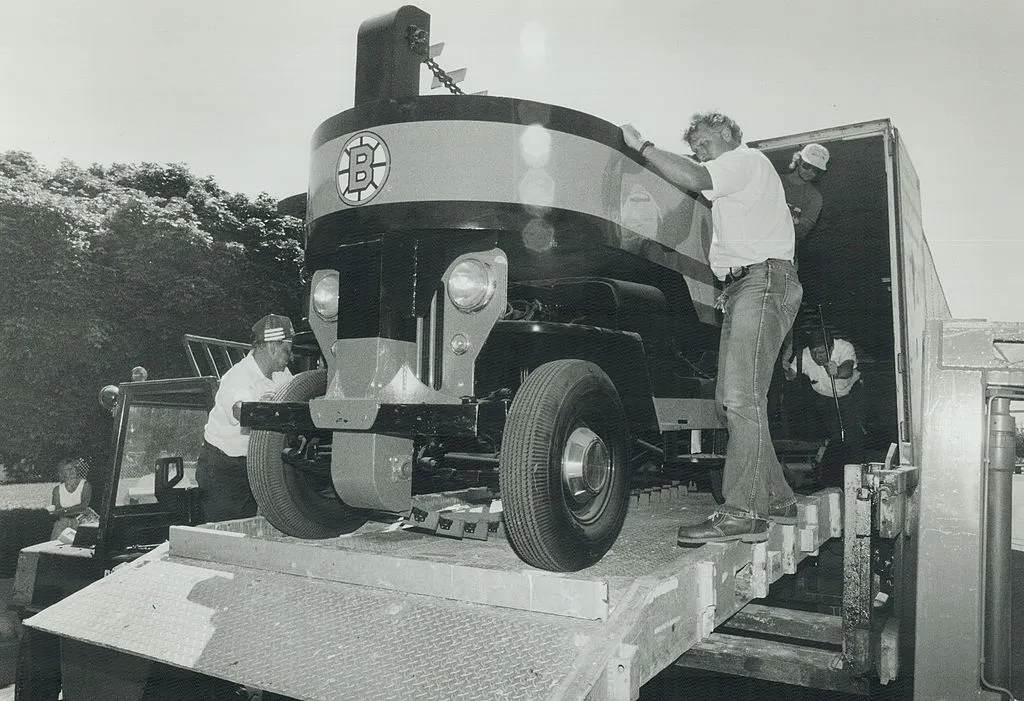
Invented by Frank Zamboni, the eponymous ice-clearing machine celebrates its 70th anniversary this year. He applied for his first U.S. patent in 1949, for this innovative idea that totally transformed winter sports by giving chopped-up ice surfaces a fresh-frozen smoothness in a matter of minutes.
“At the time, he was just trying to address a need of his,” says Frank Zamboni, the inventor’s grandson and now president of the Zamboni Company. “He saw a need for the ice rink he owned with his brother and cousins because of the time requirements. Instead of taking 1 1/2 hours to clean the ice, that was time somebody could be paying to skate on it.”
Contrary to popular belief, the Zamboni machine was not invented in Canada—the place of snow and ice—but in Southern California—the land of sun and fun. The elder Zamboni operated an ice-making plant in Paramount. As modern refrigeration equipment became more popular, he could see his business melting away like, well, ice in the California sun.
So Zamboni decided to diversify in 1939 by opening a small skating rink, now known as Paramount Iceland. As time went on, he saw a need to quickly clean the ice, so he started improvising with war-surplus equipment. Ten years later, Zamboni came up with a prototype that, as the patent describes, “functions automatically to shave the ice, convey the shaved ice to a large receptacle attached to the vehicle, and then squeegee a thin film of water over the surface of the ice so as to provide a like-new surface when the water is frozen.”
“He learned a lot from that first machine, the Model A,” says Paula Coony, brand manager at Zamboni. “It was the biggest machine he ever built, a one-of-a-kind. It was all built from war-surplus. There was even landing gear from a Douglas bomber!”
Zamboni began to refine his invention so it worked more efficiently. One of the first things he did was to change the chassis. Zamboni built the Model B using a Willys Jeep for the frame. That innovation would provide a signature look for the machine over the next few years.
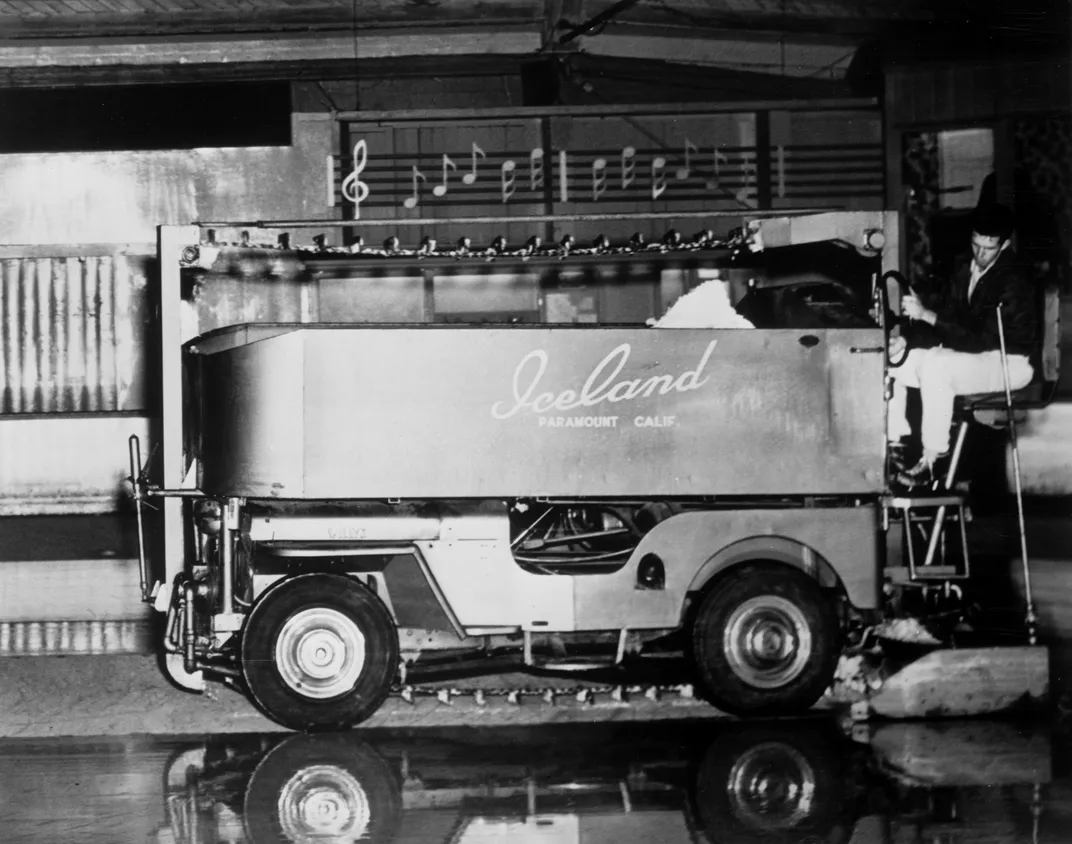
At first, Zamboni was only thinking about making a better machine for his rink. However, owners at other arenas saw the equipment in action and wanted it for their own use. Then, in 1950, Olympic ice skating star Sonja Henie was practicing at Iceland and witnessed Zamboni’s invention turning rough ice into a smooth surface. She ordered two for her European tour.
Sales slowly increased as word spread and ice sports became more popular in the 1950s. Fortune took a hand in 1960 when the Winter Olympics was held in Squaw Valley, California, complete with widespread television coverage. The U.S hockey team stunned the world for the first time by winning the gold medal on clean ice prepared by Frank Zamboni’s machines.
“The more people saw it, the better it sold,” says grandson Frank.
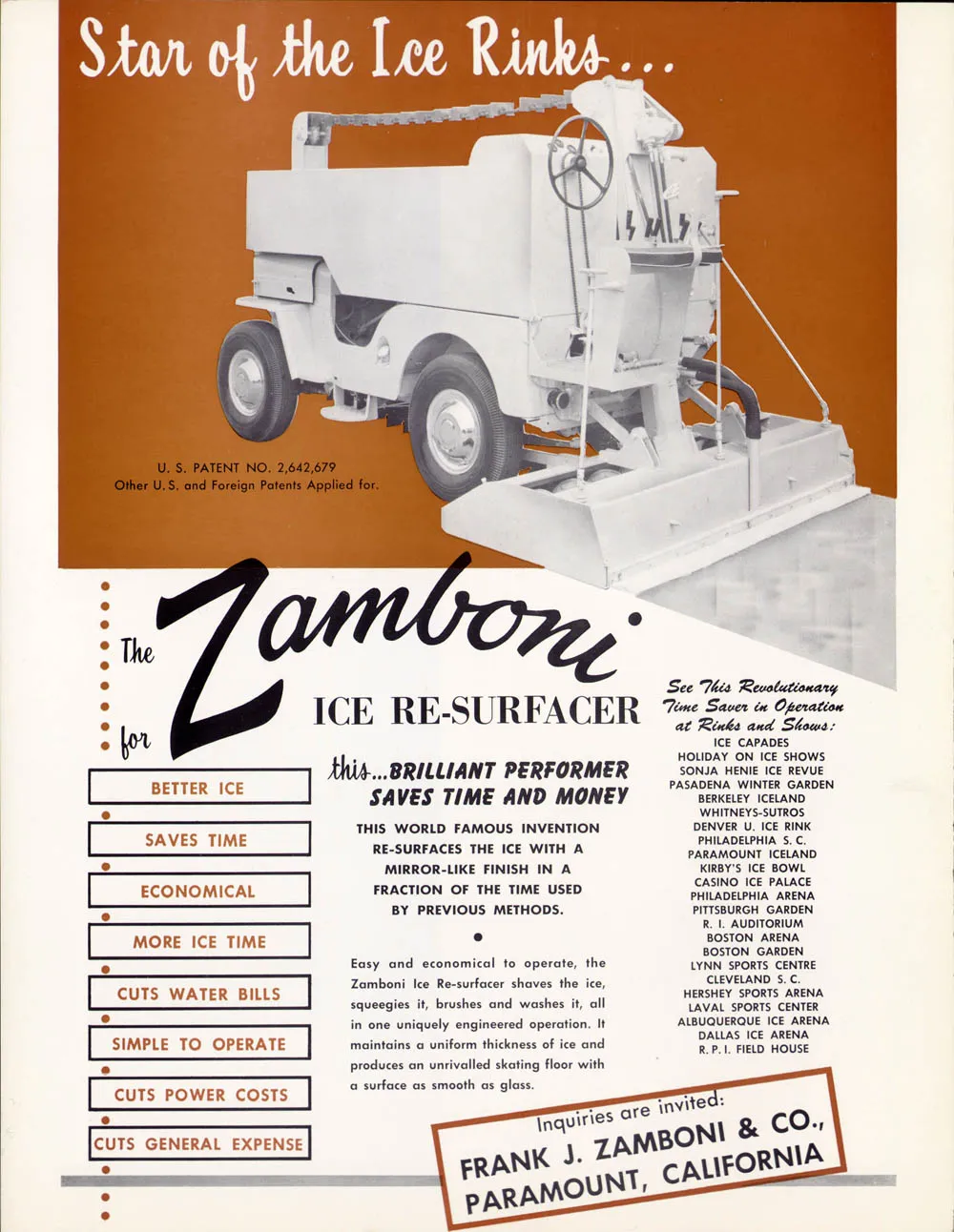
The business grew quickly after that. Canada, hockey’s birthplace, was important to the company’s success. In 1967, Zamboni opened its first manufacturing facility north of the border. Today, that facility is located in Brantford, Ontario, birthplace of “The Great One,” Wayne Gretzky, the NHL’s all-time leading scorer.
The younger Frank headed north in 1983. He helped build the plant in Brantford and strengthen the company’s position in this crucial market. Though Canada has a tenth of the population of the United States, it has three times more ice rinks than its neighbor to the south.
“The reason for me coming to Canada was the importance of this market,” the Zamboni president says. “It’s the biggest in the world. Hockey is foundational in this culture. As a Canadian citizen now, as well as an American, I realize how important hockey and skating are up here.”
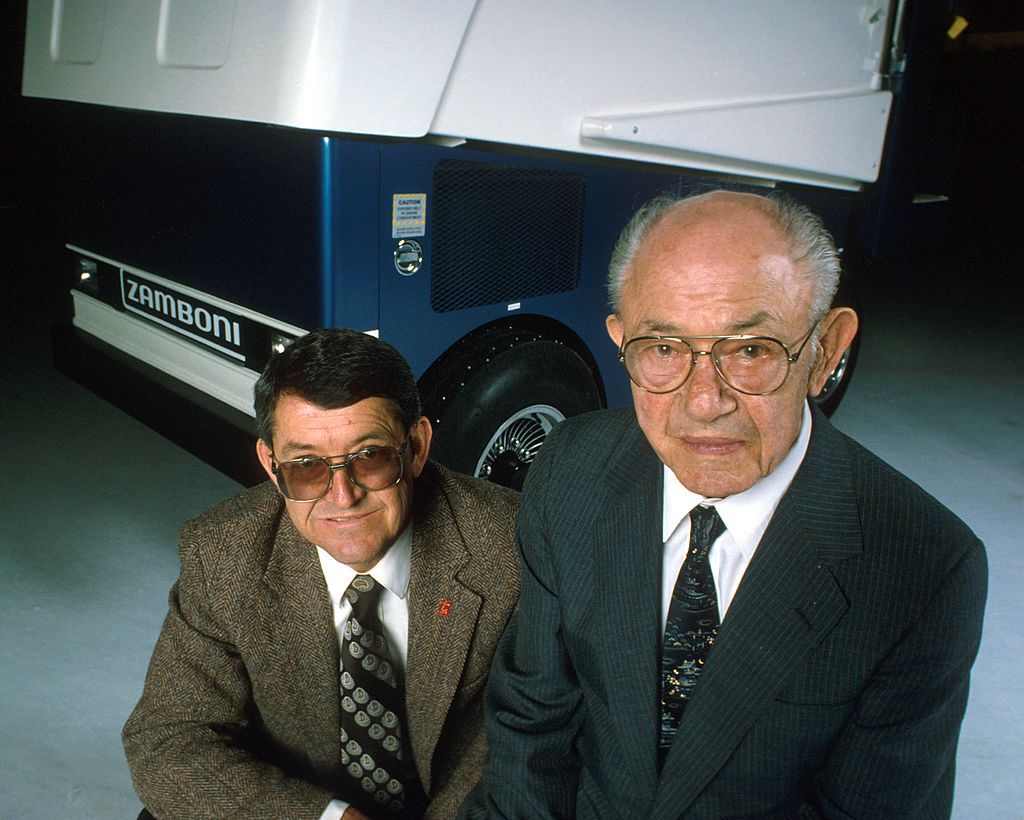
The inventor, who died in 1988, fiddled with his designs throughout his life. He even created equipment, based on his original ice-cleaning unit, for, as a 1978 patent describes, “laying down and taking up strips of artificial turf” in baseball and football stadiums. His last patent in 1983 was for an ice-edging machine that removed buildup along the boards at arenas.
The Zamboni Company remains a family-run business today. Sales are global now with a variety of Zamboni machines and equipment specifically made for different markets. While the firm does not release production numbers, it does acknowledge its preeminence in the marketplace.
“Of the 500 to 600 ice-cleaning machines made by all manufacturers today, we produce the majority of them,” Coony says. “And they are all built by hand. Each one is custom built.”
Just like Frank Zamboni did 70 years ago.
/https://tf-cmsv2-smithsonianmag-media.s3.amazonaws.com/accounts/headshot/dave.png)
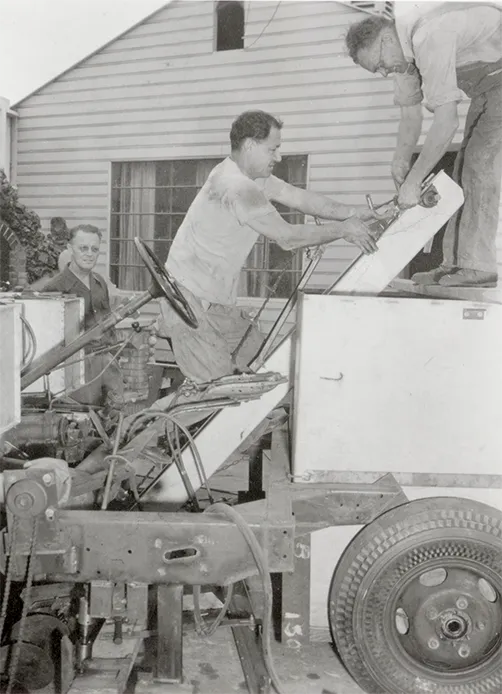
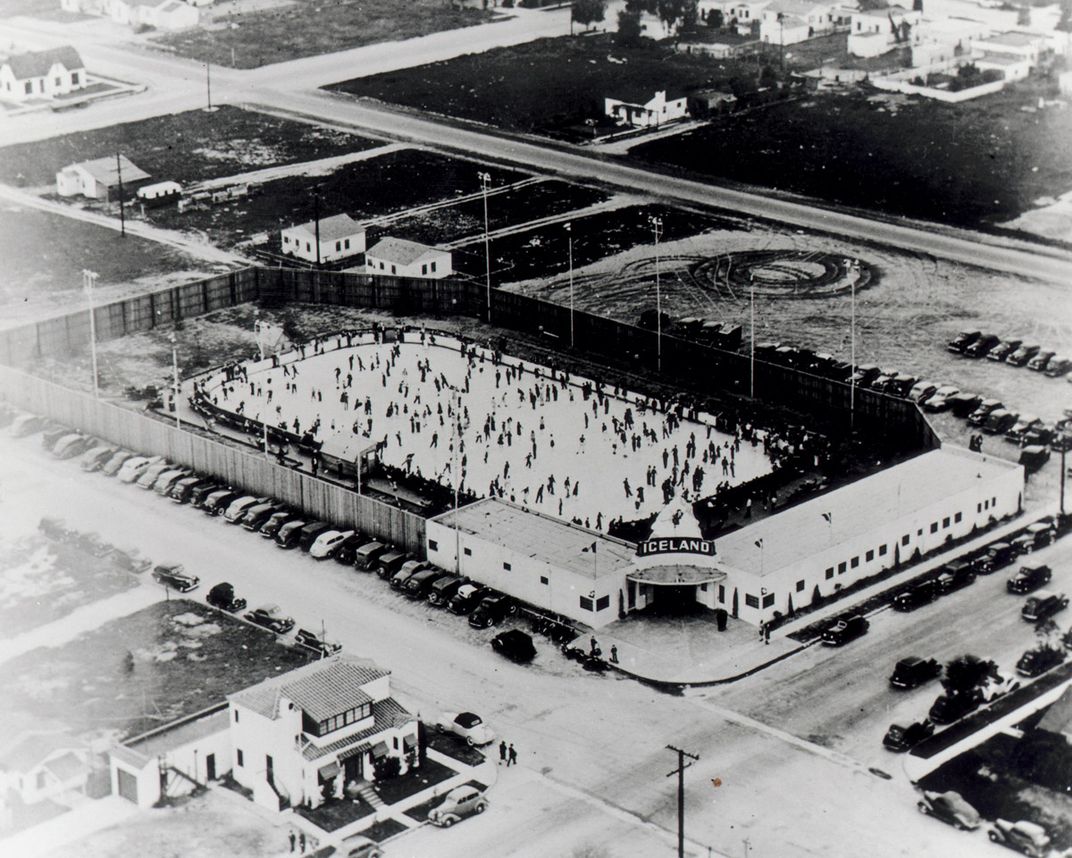



/https://tf-cmsv2-smithsonianmag-media.s3.amazonaws.com/accounts/headshot/dave.png)